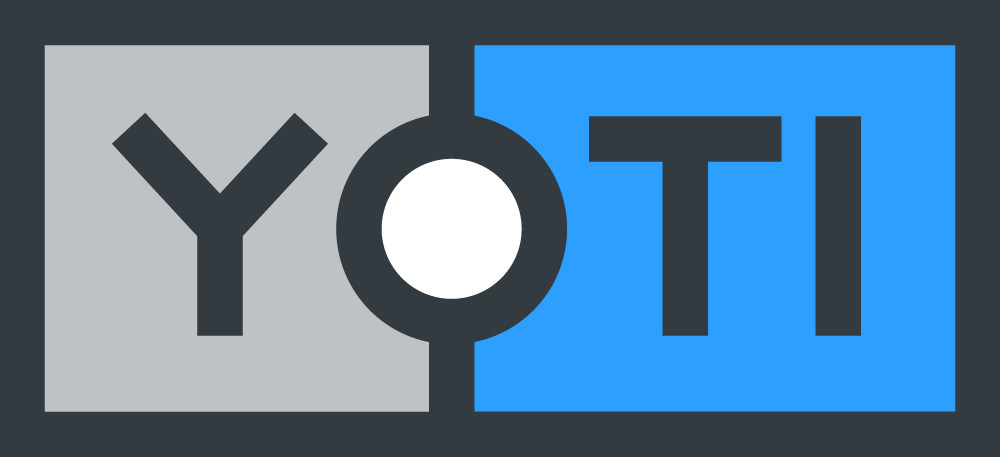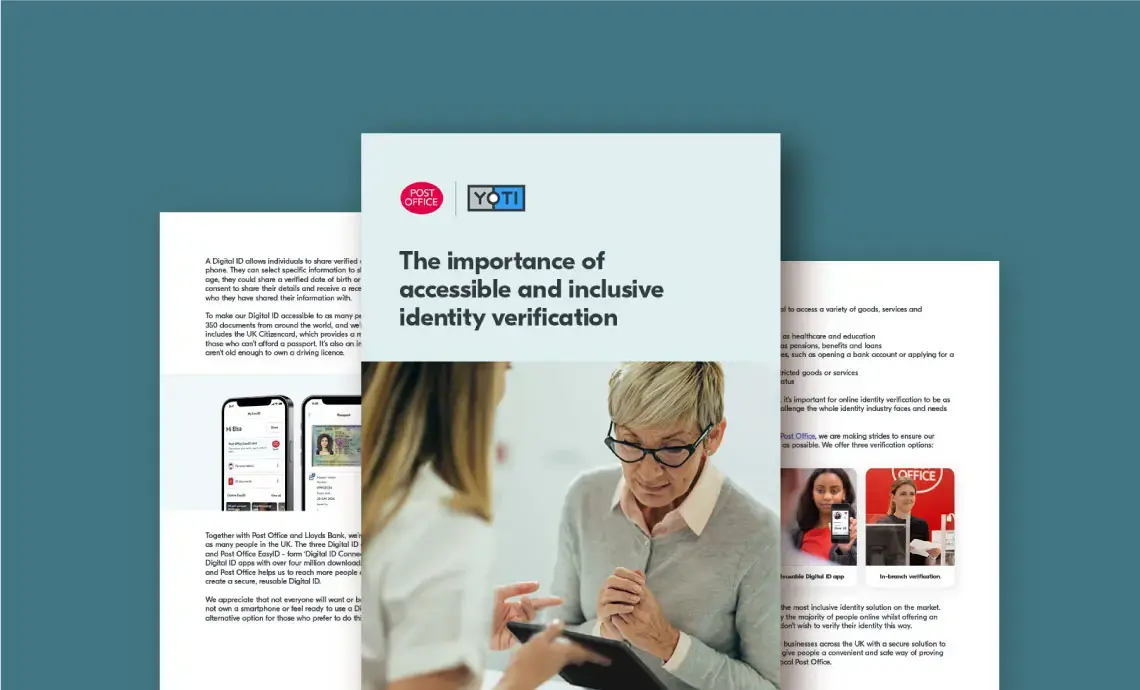Identity verification
Report: The importance of accessible and inclusive identity verification
A recent YouGov survey of 2,000 GB adults found that 69% have proved their identity online using a physical document. Of those, 71% found the process easy to use. Whilst almost half (47%) said they would prefer to prove their identity online, 26% said they would prefer to do this at a Post Office. One in five (20%) expressed no preference. With more services moving online, identity verification needs to be as accessible and inclusive as possible. Through our partnership with Post Office, we are making strides to ensure our solutions cater to as many people as possible. We offer
Yoti Identity Verification achieves WCAG 2.2 Level AA for accessibility
Our Identity Verification solution has achieved Web Content Accessibility Guidelines (WCAG) 2.2 Level A and Level AA for accessibility. This is a huge milestone for us as one of our founding principles is to ‘make Yoti available to anyone’. WCAG 2.2 Level A and Level AA WCAG’s framework is used as a benchmark for accessibility regulations around the world. To achieve WCAG 2.2, we had to meet all A and AA criteria. Level A conformance requirements prohibit elements that make the product inaccessible. If products don’t meet Level A criteria, they’re almost impossible for people with disabilities to use.
How Yoti can help the financial services industry
In today’s world, the financial services industry needs to be protected now more than ever. It’s critical to the growth of the UK economy but is constantly under attack from online actors on the hunt for money. With cyber security risks increasing, we’ve been working hard to build solutions that offer as much security as possible to such an important industry, and protection from these growing threats. The need for financial institutions to have customised systems is greater than ever due to the sophisticated nature of frequent cyberattacks. As these bad actors become more sophisticated with their approaches, we’ve
PeopleCheck automate the background screening process to scale checks without limit
“The change in legislation was a once-in-a-generation perfect storm. The automation that’s come off the back of digital identity enables us to deliver swift onboarding and a platform that’s on the leading-edge of user experience and smart technology.” David Hutchinson People Check CEO PeopleCheck is the UK’s leading background check provider. We helped them: Meet the digital ID checking requirements for right to work and DBS. Automate significant parts of the screening process. Scale from 1 check to 1,800 in the same time. Solution: Right to Work Industry: Background screening Read the case study
Digital identity verification for DBS checks
The Disclosure and Barring Service (DBS) has updated its guidance on how to check someone’s identity for a criminal record check. Previously, the process was only possible by seeing physical documents. During the pandemic, employers enjoyed relaxed rules which allowed them to do this via video call. However, the government has now updated their guidance to allow for digital ID verification technology. This means candidates can prove their identity online, which is an absolute game changer for employers grappling with a remote-first world. But how does the process work and should you use it? Here’s our guide to digital ID
Department of Trust and Yoti introduce one-click affordability and identity verification
London, UK – 6th October 2022, Digital identity company Yoti and Department of Trust, the financial KYC provider, have today announced a new partnership enabling gambling operators to complete affordability, safety and identity checks in one click. Consumers will be able to link a new or existing Yoti verification to a BetBudget personal financial profile at any time. After completing this simple one-time process, future registrations at participating gambling sites can be achieved in one click. Operators who use the combined service will have the benefit not only of frictionless registration with reduced risk of fraud, but also instant access






